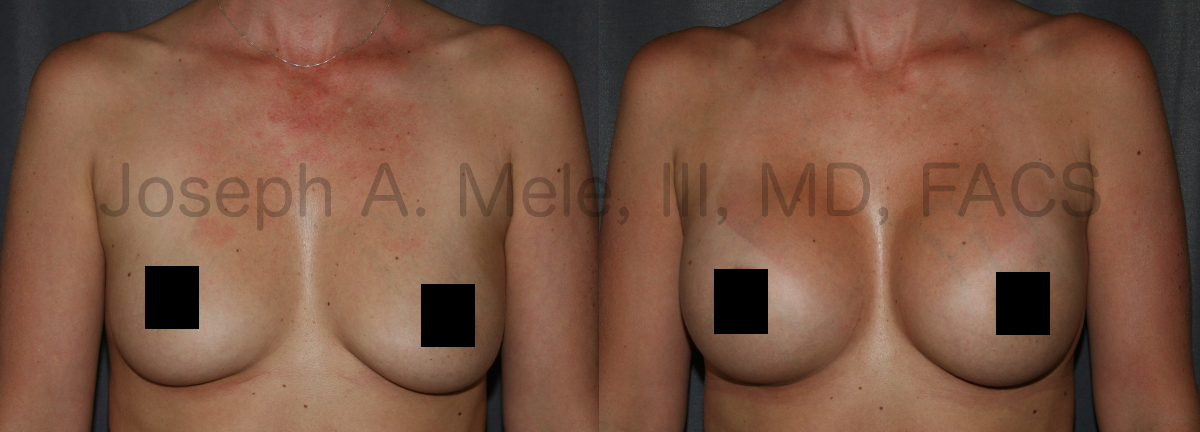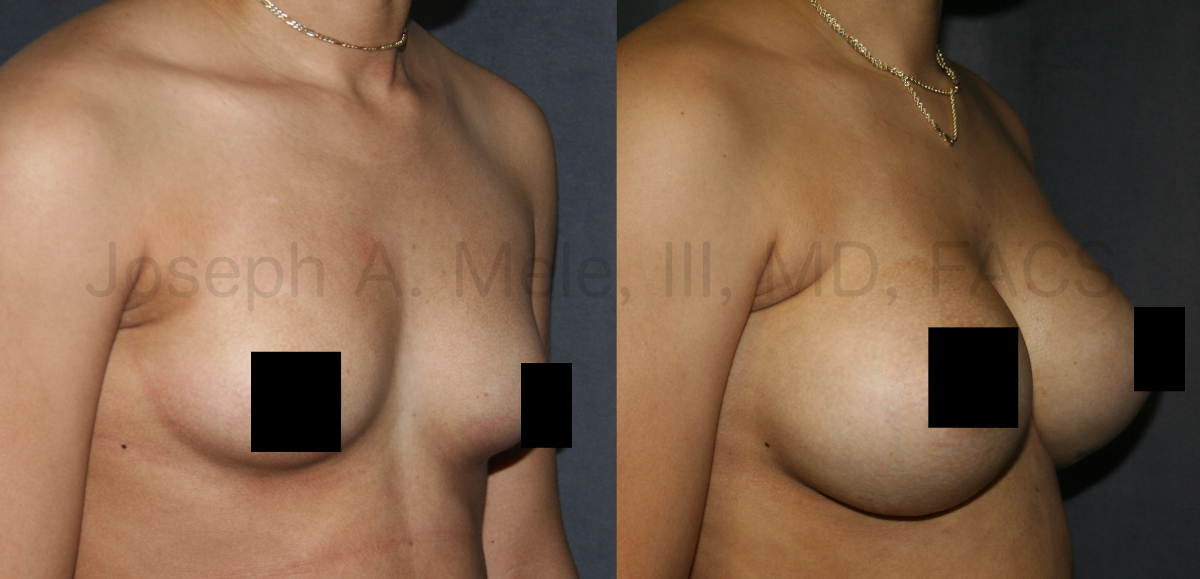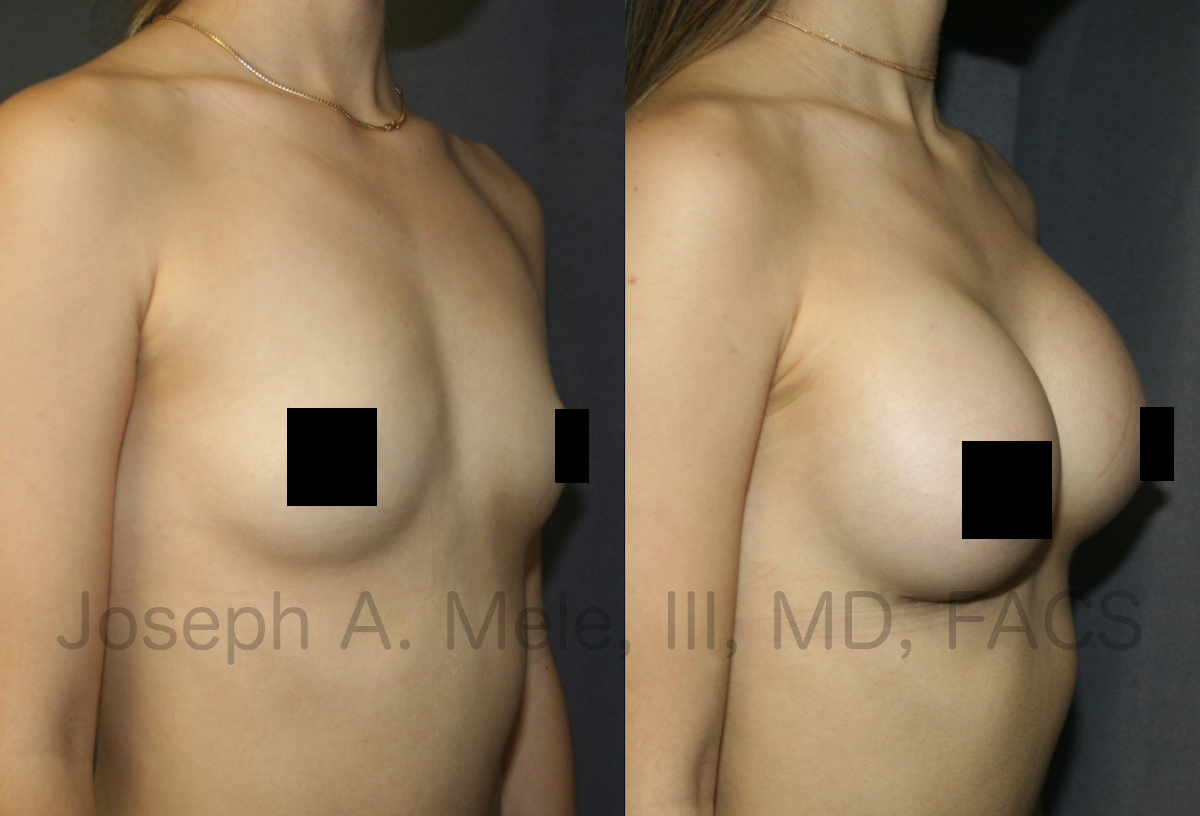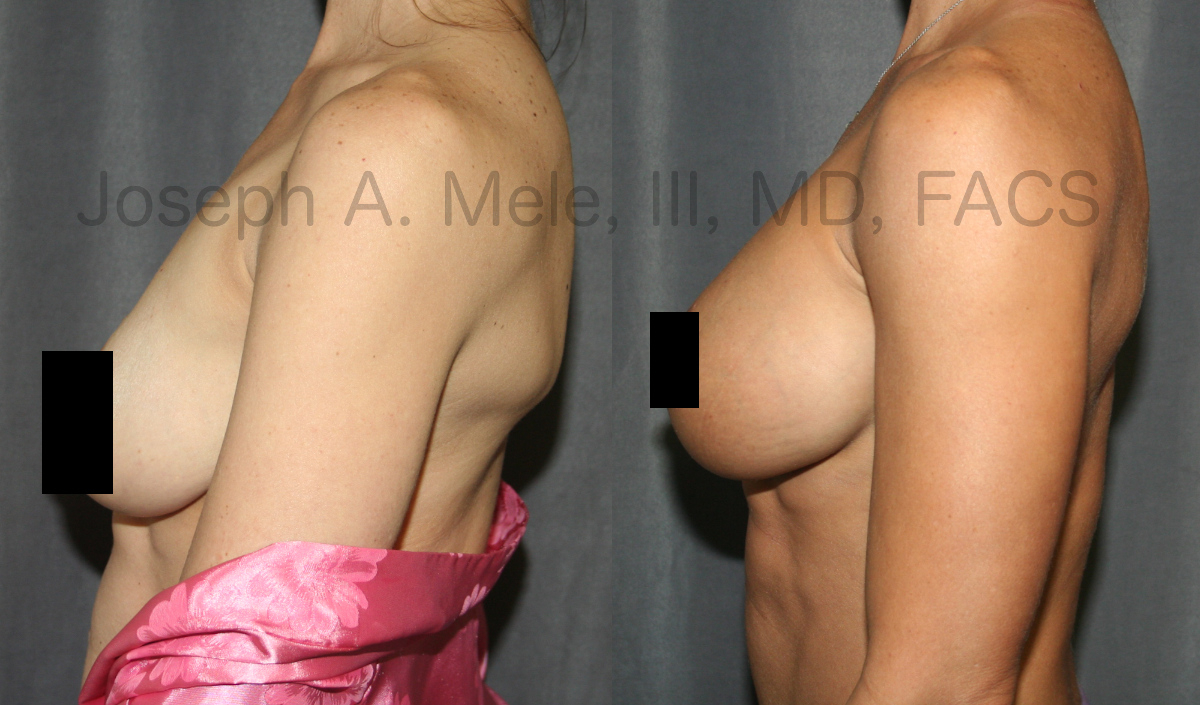Breast Augmentation: Pros, Cons, and Alternatives

Breast Augmentation increases breast volume and provides more upper pole fullness. Minor asymmetries can also be improved. (Click the image to remove the censoring.)
Breast Augmentation, medically known as augmentation mammoplasty, is one of the most popular cosmetic surgical procedures worldwide. It involves enhancing breast size and shape, typically with implants or fat transfer, to achieve a desired aesthetic or to restore volume lost after weight loss, pregnancy, or aging. While it can provide transformative results for many patients, it is important to understand not just the benefits, but also the potential drawbacks, limitations, and other options available.
Five Pros of Breast Augmentation

Breast Augmentation not only enlarges the breasts but also enhances the breasts’ proportions. (Click the image to remove the censoring.)
- 1: Enhanced Appearance and Symmetry –
Breast augmentation can address naturally small breasts, uneven breast sizes, or breasts that have lost volume due to pregnancy, breastfeeding, or weight changes. The procedure can improve symmetry, balance proportions, and create a fuller, more youthful look. - 2: Boosted Self-Confidence –
Many patients report a significant increase in body confidence and satisfaction with their appearance after augmentation. Feeling more comfortable in fitted clothing, swimsuits or lingerie, often translates into improved self-esteem in social, personal, and professional settings. - 3: Customizable Results –
Breast augmentation offers a high degree of customization. Choices include implant size, shape (round or anatomical/teardrop), fill material (silicone or saline), projection, and placement (above or below the chest muscle). Fat transfer offers a more natural approach for those seeking a modest increase. - 4: Restoration After Body Changes –
For women who have experienced breast deflation after pregnancy, breastfeeding or significant weight loss, augmentation can restore a pre-pregnancy or pre-weight-loss contour. This is often part of a “mommy makeover” procedure. - 5: Long-Lasting Enhancement –
While not permanent, modern implants are durable, with many lasting 10–20 years or more before requiring replacement. Silicone gel implants, in particular, are designed to resist leakage and maintain their shape over time.
Five Cons of Breast Augmentation

The volume of the breast implant depends on the desired look and size and the starting point. Smaller breasts need larger implants to get similar results. (Click the image to remove the censoring.)
- 1: Surgical Risks –
Like any surgery, Breast Augmentation carries risks such as infection, bleeding, poor wound healing, unsatisfactory scars, or anesthesia complications. While rare, these risks must be considered. - 2: Capsular Contracture –
Capsular Contracture occurs when scar tissue around the implant tightens, distorting the breast shape, causing firmness and sometimes causing pain. Treatment may require revision surgery. - 3: Implant Rupture or Leakage –
Implants are not lifetime devices. Saline implants can deflate suddenly if ruptured, while silicone implant ruptures may be “silent” and only detected with imaging (MRI or high definition ultrasound). Replacement surgery is necessary in either case. - 4: Changes in Sensation –
Some patients experience temporary or permanent changes in nipple or breast sensation. This can be more common with certain incision types or implant placements. - 5: Potential Interference with Breastfeeding –
While many women can successfully breastfeed after augmentation, the surgery may affect milk production or duct integrity, especially if certain incision sites (around the areola) are used.
Five Alternatives to Breast Augmentation

Larger breasts require smaller implants to get similar results, and may need a lift for the optimal breast aesthetics. (Click the image to remove the censoring.)
While Breast Implants are the most common method of Breast Enlargement, alternatives vary. They can be surgical or non-surgical and may provide temporary to long-term solutions.
- 1: Fat Grafting to the Breasts –
Instead of implants, a surgeon harvests fat from another area of the body (such as the abdomen, thighs, or flanks) via Liposuction, processes it, and injects it into the breasts.Pros:
- Uses the patient’s own tissue (no foreign body).
- Fat addition can be contoured to need.
- Provides body contouring benefits from liposuction.
Cons:
- Limited size increase (usually ½ to 1 cup size).
- Fat uptake/reabsorption is variable.
- May require multiple sessions for desired volume.
- Donor site problems
- 2: Breast Lift (Mastopexy) –
For women whose primary concern is sagging rather than volume loss, a breast lift can reposition and reshape the breasts without significantly increasing size. If you are happy with the size of your breasts when wearing a bra, a Breast Lift might be a better procedure for you.Pros:
- Improves breast position and firmness.
- Can be combined with implants or fat transfer for added volume.
Cons:
- Does not add substantial fullness alone.
- More extensive scarring compared to augmentation.
- 3: External Breast Enlargement Systems –
Vacuum-based devices, worn daily for weeks or months, stimulate breast tissue expansion through suction.Pros:
- Non-surgical.
- Some studies show modest, long-lasting growth.
Cons:
- Requires consistent daily wear.
- Results are subtle and vary between users.
- 4: Padded or Push-Up Bras –
This is the most common method of Breast Enlargement. A completely non-invasive, instant way to enhance appearance without surgery or downtime.Pros:
- Affordable, risk-free, and fully reversible.
- Variety of styles and levels of enhancement.
Cons:
- No change to actual breast tissue.
- Temporary effect — only visible when a bra is worn.
- 5: Exercise and Posture Improvements –
While exercise cannot increase breast tissue (which is mostly fat), strengthening the pectoral muscles beneath the breasts can create a modestly lifted, fuller appearance. Correct posture also improves breast projection.Pros:
- Health benefits beyond aesthetics.
- No cost or recovery time.
Cons:
- Results are modest.
- Requires long-term consistency.
Making the Right Decision
Choosing whether to have Breast Augmentation requires a clear understanding of goals, lifestyle, budget, and medical factors. Important steps include:
- 1: Consultation with a Board-Certified Plastic Surgeon –
An experienced, Board Certified Plastic Surgeon can evaluate your anatomy, discuss desired outcomes, and recommend the safest and most effective method. - 2: Health and Safety Considerations –
Pre-existing conditions, smoking, and certain medications may impact healing and risk levels. Discuss your full medical history with your surgeon. - 3: Realistic Expectations –
Understanding what breast augmentation can and cannot achieve helps ensure satisfaction. Looking at before-and-after photos of patients with similar body types can help set realistic goals. - 4: Adequate Recovery Preparation –
Having the appropriate time to recover is important. Lifting is limited to ten pounds for two weeks after surgery. Pain medication is normally used for the first few days after surgery, so driving is not recommended until narcotics are stopped. - 5: Long-Term Maintenance –
Patients should be prepared for the possibility of future revision surgeries and ongoing monitoring of implant integrity.
Breast Augmentation Consultations
Breast Augmentation can be life-changing for those seeking enhanced curves, restored volume, or improved symmetry. It offers customizable, often long-lasting results and high patient satisfaction rates. However, it also carries risks, requires maintenance, and may not be the right choice for everyone.
The key is making an informed, personalized decision in consultation with an experienced plastic surgeon. In the San Francisco Bay Area call (925) 943-6353 for a personalized and private Breast Augmentation Consultation. A thoughtful, well-researched approach ensures the safest path toward a result that aligns with both your body and your confidence.
Previous Post Next Post